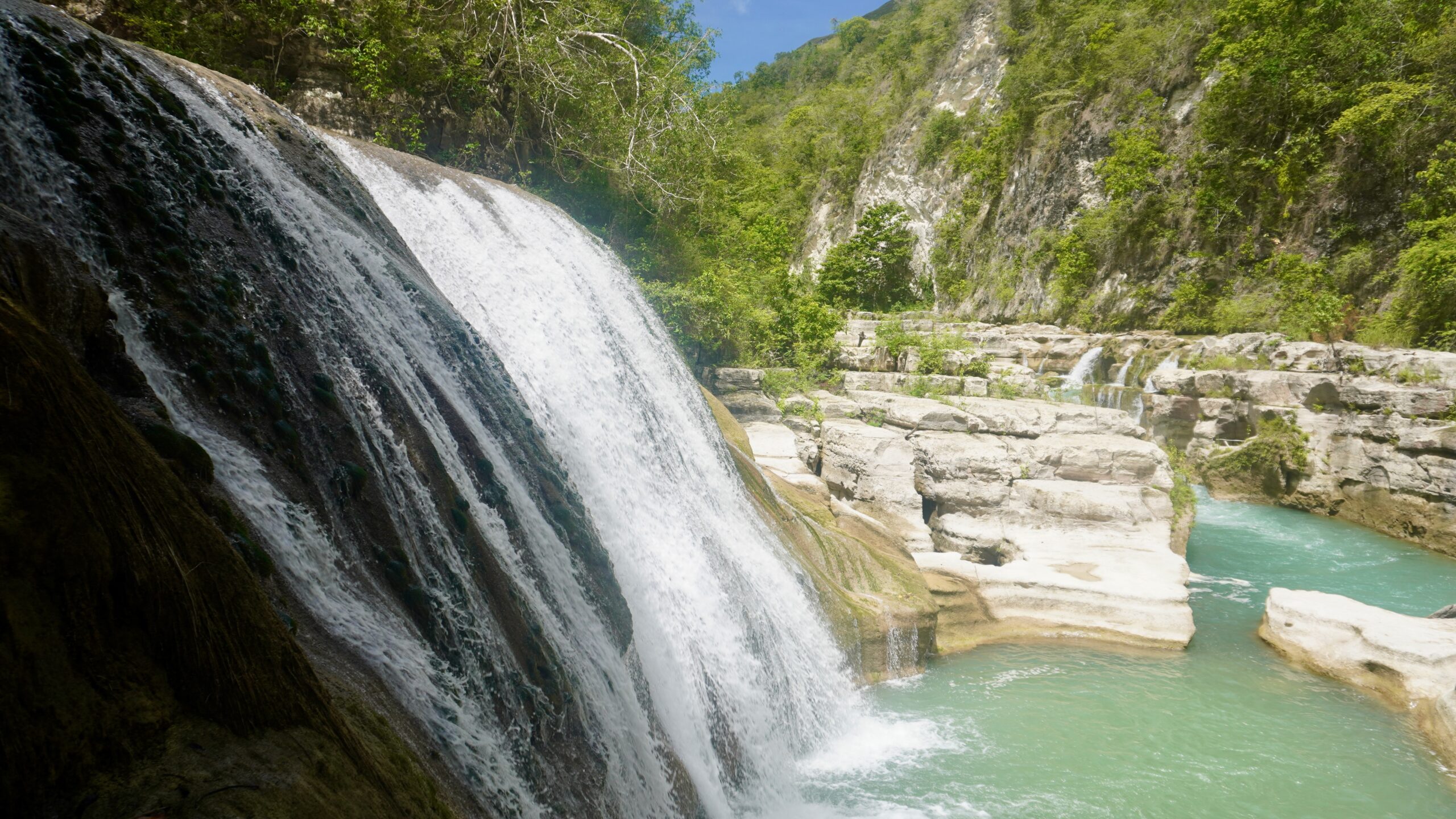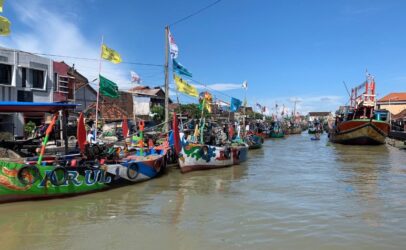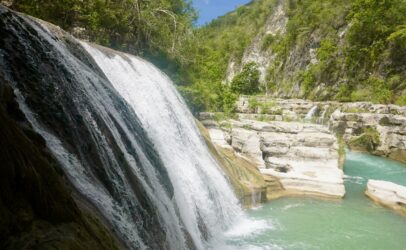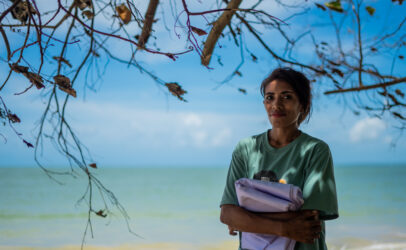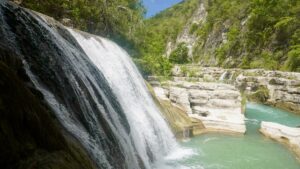
Amidst the vast savanna of East Sumba lies a village nestled in the valley of hills. Despite the scorching sun and the dry land that seems to radiate the heat, there stands a refreshing oasis.
***
In the local language, Tanggedu is referred to as da ku nggedik, which means “not wavering” or “not afraid”. For someone who is visiting East Sumba and Tanggedu for the first time, I can attest that reaching this destination requires not to be afraid.
From Waingapu City, it takes at least two hours to travel through the twists and turns of the savanna to get to Tanggedu Preparatory Village. Throughout the journey, my eyes cannot stop admiring the nature of Sumba. From the village, it takes thirty minutes of walking to reach the refreshing oasis, the Tanggedu Waterfall.
Becoming a tourist attraction since 2014 with a fee of IDR 10,000 per person, Tanggedu Waterfall is able to provide an average income of IDR 4-5 million per month, and it will increase in the dry season. The profit is distributed to several parties. 60% to the landowner, 25% to the village revenue, and 15% to be managed by the Tourism Awareness Group (Pokdarwis) which is also used for community social needs.
“All components of the society get a share of the results from this joint tourism management,” said Kabula Hara Endi, Head of Tanggedu Preparatory Village.
According to him, turning Tanggedu Waterfall into a tourist attraction required negotiating with local residents, especially landowners whose property to be used for parking area or tourist facilities.
“We did an approach and provided an understanding of the significance and the benefit of the project to everyone involved, so the residents are willing to contribute their land,” he continued.
Involving the residents from the beginning is crucial and essential. In various planning processes for the future development of Tanggedu Waterfall, residents are fully engaged through Pokdarwis. They build, they maintain local wisdom, they are also responsible for ensuring that the surrounding ecosystem is not damaged by development, especially from outside parties. That is what the residents believe about eco-tourism at Tanggedu Waterfall.
“An outside party offered to buy the land, but we refused because we want our children and grandchildren to have a bond with Tanggedu Waterfall,” Kabula Hara Endi concluded.
Collaboration of the People, CSO, and the Government
Previously, the management of Tanggedu Waterfall was entirely in the hands of the local community. The route leading to the waterfall was still composed of dirt and rocks, and can only be accessed through the use of ropes. Information boards were minimal and no regulations regarding entrance fees.
The Koppesda Foundation, which is responsible for Natural Resources Assessment and Management Coordination, is located in Waingapu, East Sumba. They believe that Tanggedu Waterfall has great potential if it is managed in a clear way that prioritizes the preservation of the ecosystem and the welfare of the local community. To achieve this, they engaged in a dialogue with the community and provided assistance for eco-tourism development based on local wisdom.
“The village and regional governments and the Ministry of Villages support tourism here. Notably the introduction of village regulations in East Sumba promoting indigenous community-based eco-tourism,” said Umbu Tri, from the Koppesda Foundation.
“Without the support of our friends from the Koppesda Foundation, it would have been very challenging for us. Additionally, we are blind which would have made it even more difficult for us to have consultations with the East Sumba Regency Government in Waingapu,” explained Kabula Hara Endi in response to Umbu Tri’s account.
In 2021, facilities and infrastructure were constructed with the support of the Ministry of Villages, Development of Disadvantaged Regions, and Transmigration. A sum of IDR 500 million was provided as assistance funds to build a gazebo at the entrance to the waterfall, bathrooms, stairs leading to the waterfall, parking area and other necessary amenities.
The Tanggedu Waterfall tourist attraction has served as a means of adaptation for the indigenous people in Tanggedu, in response to various natural adversities in East Sumba. An extended period of drought and locust attacks from 2019 to 2023 had disrupted agriculture. However, the successful management of the Tanggedu Waterfall has provided economic sustenance for the people.
Apart from distributing ticket proceeds and parking at the location, residents also have the opportunity to earn income by becoming motorbike taxi drivers, selling coconuts, corn and nuts, and even becoming tour guides.
“The community benefits greatly from this eco-tourism, and there is a strong sense of shared ownership of the area,” said Kabula Hara Endi.
Community Involved, Community Reaps the Benefits
Tanggedu Village has approximately 110 families, which is roughly 300 individuals. The village’s traditional elders, youth, and women all support the Tanggedu Waterfall tourism. While agriculture used to be the primary source of income, the presence of this tourist attraction has added economic resources for the community, including the younger generation.
The young people here are all farmers. With the existence of this tourism, these young people are able to earn additional income by providing motorbike taxi services and acting as tour guides for visiting guests. They are actively involved in various aspects of tourism, including assisting with program implementation and maintaining the cleanliness of Tanggedu Waterfall.
“Young people are very supportive towards each other and participate in programs that promote community-building. The elders and Indigenous Community leaders are equally helpful and supportive,” said Melvi Pombu Henggu Ndapatamu, an indigenous youth from Tanggedu, who is also the Deputy Chair of Pokdarwis.
***
The water in the river has a green hue and there are numerous large rocks scattered throughout. Some areas of the river are calm like ponds, which is a popular spot for tourists to enjoy the refreshing water. After a long and challenging journey, the destination seems to have been worth the effort.

